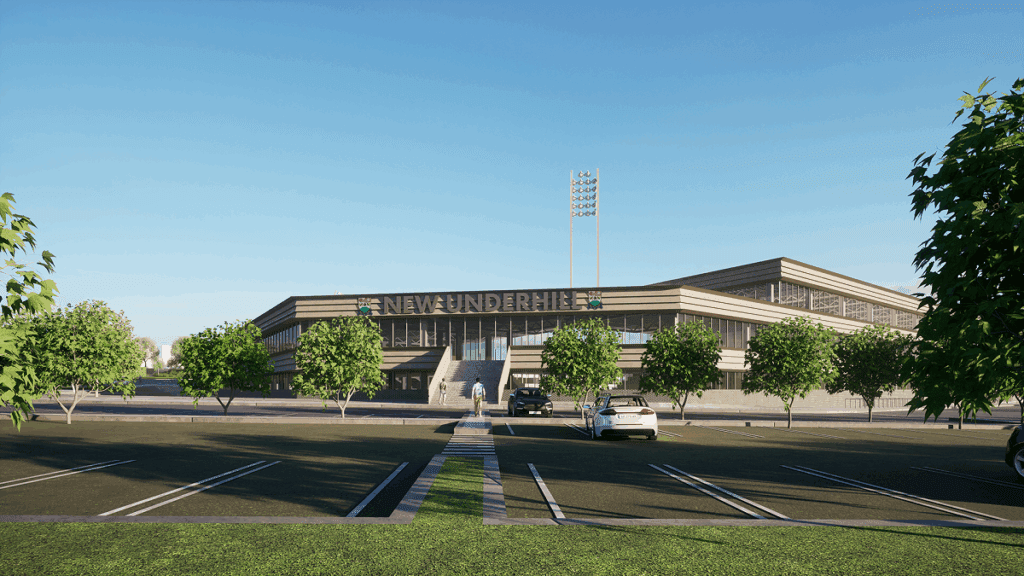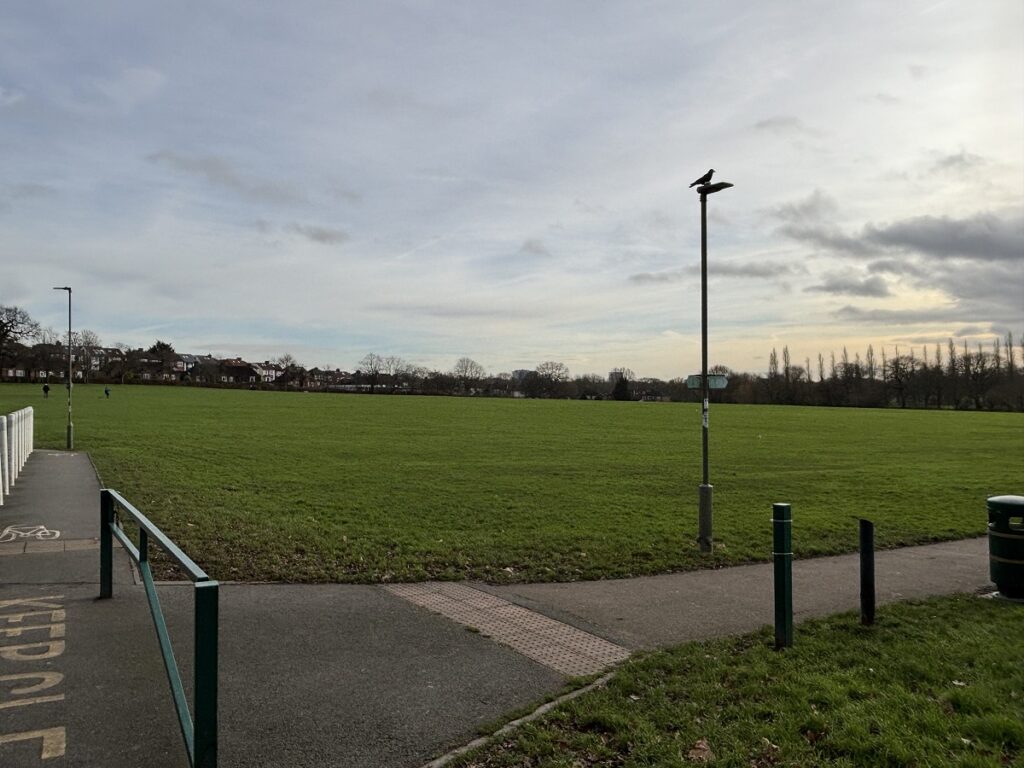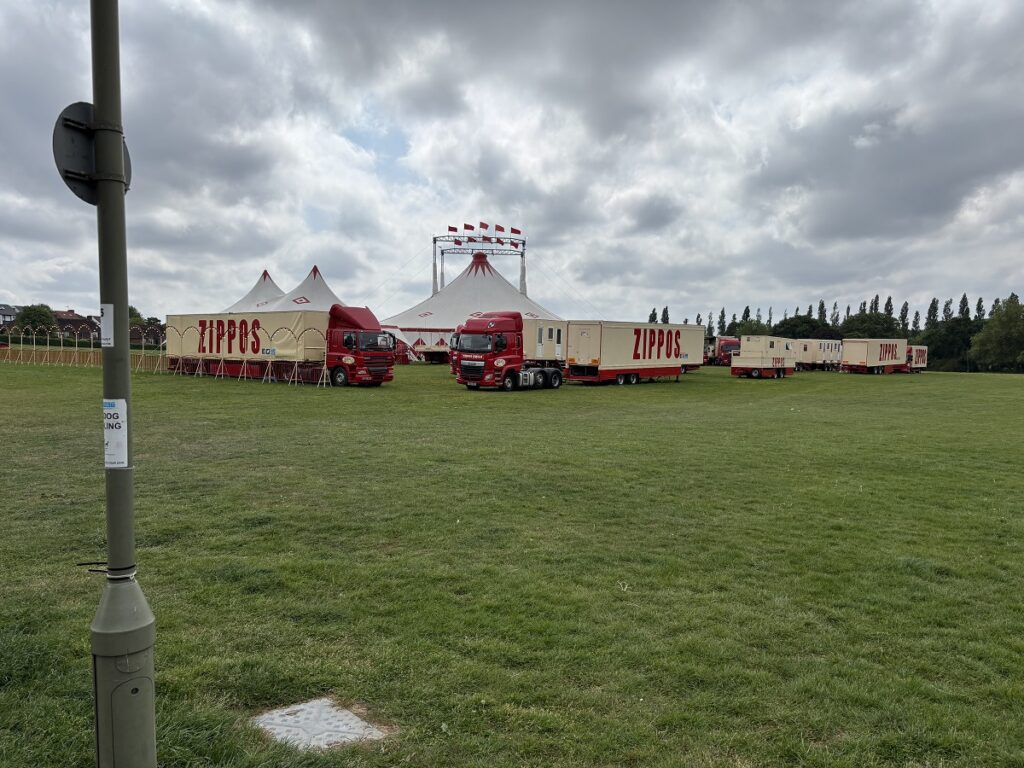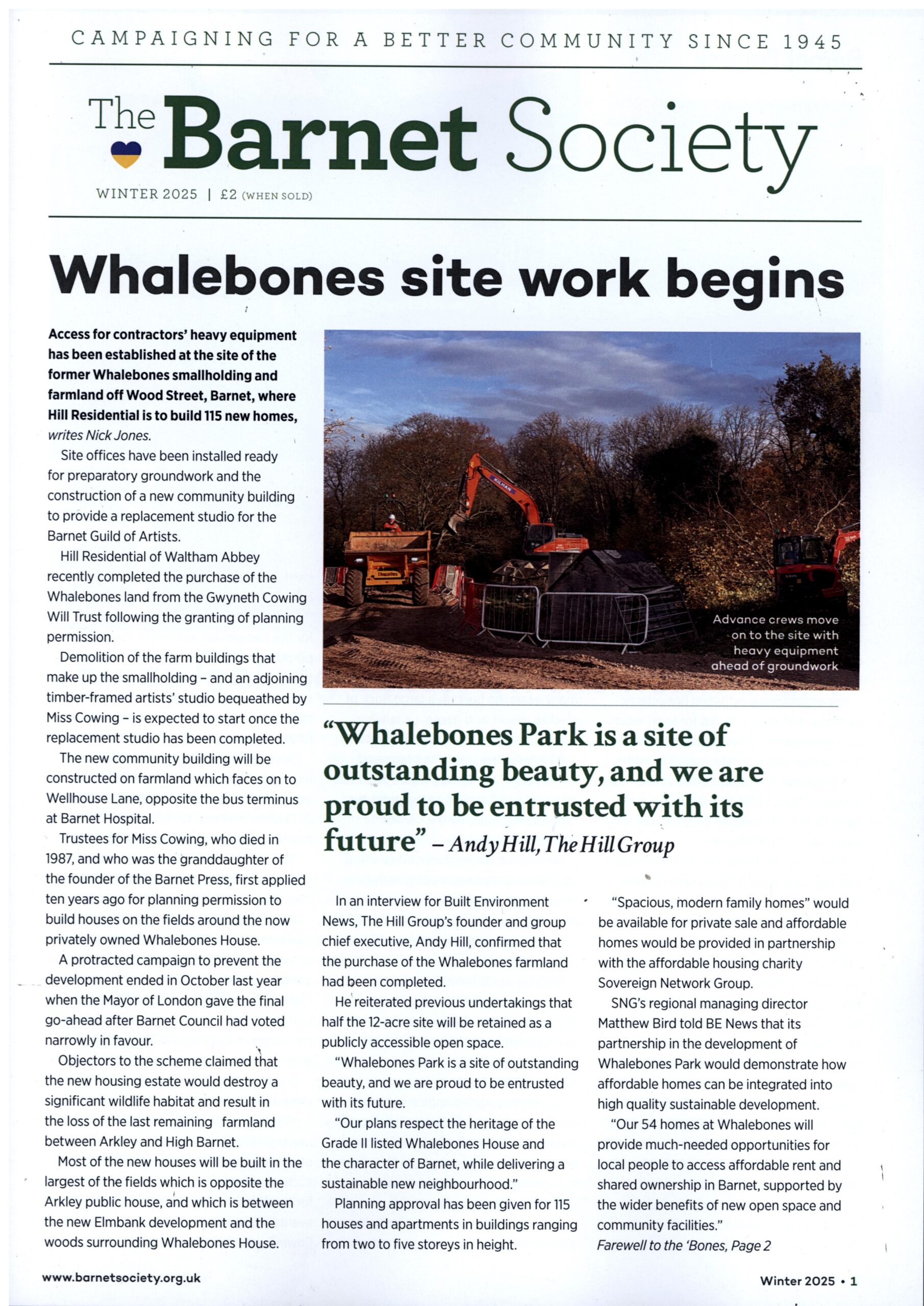With a decision likely within weeks, BringBarnetBack step up their campaign for Barnet Football Club to return to Underhill

In advance of a key meeting which campaigners understand will be held in mid-July, BringBarnetBack have launched a last-minute appeal to Barnet Council to give the go-ahead for a new football stadium at Underhill.
From their own extensive soundings, they believe that there is a 50/50 chance of the council’s strategic planning committee granting planning approval for a 7,000-seat stadium at Barnet Playing Fields.
If the application is rejected, they are confident that the club will launch an appeal and they think it could become a test case in the push by the government to free up some Green Belt land for redevelopment.
However, BringBarnetBack warn that if the playing fields are redesignated as Grey Belt and freed for development, there is a danger the open space might be lost to make way for new housing.
At issue is the argument between many local residents who want to preserve the playing fields as a vital open space and Barnet FC supporters who are fully behind the offer of the club chairman Tony Kleanthous to move the club from The Hive at Harrow to a new £14 million stadium at Underhill.
BringBarnetBack have issued a 14-page dossier examining the arguments for and against the application which ends with a plea to the council to vote for a project that would be a sustainable development; enhance the surrounding Green Belt land; and bring back a football club that has “never stopped believing in coming home”.
(Bring Barnet Back – The Case http://eepurl.com/jhcTaU )

The proposed stadium would take up 22 per cent of the southern section of the playing fields – see above – which BringBarnetBack argue is in effect a “de-facto abandoned field with a monoculture of weeds and grass”.
Campaigners have visited the site at “hundreds of different times and in all weather conditions and claim there were “no people” on the proposed site, beyond the odd dog and its owner.
They believe the case for it becoming the new home of Barnet FC is strengthened by the fact that under a previous plan Barnet Council had proposed redeveloping the playing fields with a new 10,000 square foot destination sports hub that would have included two multi-purpose activity spaces, a cafe, six changing rooms and 55 new car parking spaces.
Because of severe funding restraints the council has not proceeded with its own plan and the reality is that all these facilities – and more – could be included in the new Barnet FC stadium “at no cost to the council”.
Included in the new stadium would be medical facilities, which could be used by NHS patients; new public toilets which could encourage more use of the existing children’s playground and basketball courts; and community space for local food hubs and other charitable organisations.
One issue not addressed in the BringBarnetBack dossier is the wider use of the playing fields for large public events.

In May the playing fields hosted a five-day visit by Zippos Circus and other events are planned for later in the summer.
Organisers who have previously presented music and community festivals at other nearby sites such as Trent Park and Oak Hill Park, are switching to the playing fields at Underhill because of what they say is excellent access to public transport.
Other events being advertised at the playing fields are the Eagle Festival of Music over the weekend of June 21-22; the Ghana Party in the Park festival and the Mauritius open air festival which will be staged separately on the Saturday and Sunday of July 12 and July 13.
BringBarnetBack underline the urgency of the application: currently Barnet FC is loss-making and kept afloat at Harrow by Mr Kleanthous who is “willing to subsidise the club at a personal loss”.
Since moving to The Hive from Underhill in 2013 the club has lost between 25 per cent and 30 per cent of its core support and despite its promotion to the League Two of the English Football League, Barnet’s future is “unsustainable away from its home”.
Securing a return to Underhill – its home of 107 years — represents in planning terms “very special circumstances” to justify building a stadium on Green Belt land.
Tags: #Barnet Council #Planning
8 thoughts on “With a decision likely within weeks, BringBarnetBack step up their campaign for Barnet Football Club to return to Underhill”
Comments are closed.


The estimated £14m apparently represents construction costs only – implying that the (publicly owned green belt) land would be made available at no cost to BFC.
Also please note that the £14m+ purchaser of the old Underhill stadium was the Education Funding Agency (i.e. “the taxpayer”).
It’s ‘big business’ making a play for land they have no intention of buying, just want to have it.
This land is Green Belt land and used by local people and goes against Barnet’s own planning requirements.
Barnet Football club, at the Hive, has just won and been promoted. Didn’t need to be Back in Barnet to acheive this
What a silly comment what has winning the league got to do with it ? Being in Barnet is where ‘Barnet’ belong
Barnet Society – you are seriously damaging your reputation as a defender of green belt with these very biased articles in support of Barnet Football club. Even with your “reservations” it is clear you support Barnet FC building on green belt. And there is no way if the club fold that the ground would ever go back to being a green space – a laughable suggestion, unless you can cite any cases where this has happened in your 80 year history??? Didn’t think so.
I would suggest any members of the Society who truly value protecting access to green spaces for all (not just fee paying ticket holders who want to watch 22 football players run around on a private ground) in London don’t renew their membership of your organisation. Did you know selling playing fields disproportionately affects the lowest income families? Not everyone can afford gym or sports team memberships to stay fit and healthy.
In 10/20 years time do you really want to be remembered as the organisation that opened the gates to building on playing fields and making London even more grey and concreted? Pick a side and stick to your principles! Disappointing.
t’s understandable that emotions run high when it comes to the protection of green space – especially in a borough like Barnet, which has a long and proud history of defending the Green Belt. But to accuse the Barnet Society of abandoning its principles for merely engaging in a balanced and open-minded discussion is both unfair and inaccurate.
First, the Society has not come out unconditionally in support of the New Underhill plans. Its position is clear: conditional support if key concerns are addressed. That’s called engagement, not bias. Planning isn’t a matter of picking sides—it’s about weighing complex trade-offs in the public interest. To refuse even to consider a proposal because it involves change to a portion of greenbelt land is not principled—it’s inflexible.
Second, the idea that this development would turn playing fields into concrete is misleading. The application affects just 22% of the Barnet Playing Fields, retaining 78% for public use, with clear evidence that the portion in question is largely unused, unmaintained, and already marked for redevelopment in the Local Plan. The stadium proposal includes a net biodiversity gain, 129 new trees, enhanced public access, and free-to-use community facilities—hardly the march of concrete over countryside.
Third, the claim that community sports facilities benefit only “fee-paying ticket holders” misses the point entirely. The proposal would deliver free-use sports space, medical facilities, public toilets, and amenities that expand access to sport, not shrink it. In fact, the existing state of the field offers very little usable infrastructure for families or young people without organised clubs.
Finally, on the notion that once built, land can never return to green space: that is an argument against any kind of redevelopment, anywhere. History does offer examples where community infrastructure was lost or repurposed—both positively and negatively. But the more serious question is this: what is the best use of this specific piece of land now—left to stagnate as low-quality scrubland, or transformed into a mixed-use hub that serves youth sport, walking football for elderly residents, women’s football, and broader community needs?
The Barnet Society has done what responsible civic organisations should: it has listened, read the evidence, and responded proportionately. That’s not selling out—it’s doing the hard work of civic leadership.
If you’re truly committed to protecting green space and enhancing community access to sport, the New Underhill proposal deserves proper scrutiny—not blanket rejection based on slogans. Let’s raise the level of debate, not lower it to litmus tests and purity politics
Hi Ella J – or BBB?
22%??? I really wish I understood where this figure came from. This figure only seems believable if the whole site (inc the Football Pad and Ark Academy pitches are included in your calculations) in which case leaving 78% available for the public is completely misleading as those “parts” of Barnet Playing Fields are already private and not available to the public. 14% net biodiversity gain is only marginally over the 10% needed for all new developments – hardly something to shout about! Medical facilities – or a private company owned by Mr Kleanthous? Agree NHS will be able to use it but it will come at a price for all taxpayers.
My frustration with Barnet Society is that they have never spoken to local residents for their views. They also strongly opposed a plan in 2019/2020 by the council which looked at putting a very small changing room and toilets in a corner of the site as over development and leading to loss of green belt land! I can’t understand how you could oppose that but “support” (with caveats) Barnet FC building a large 7,000 capacity stadium?? Many of the articles are heavily in favour of Barnet FC returning so does suggest a bias.
More than happy with a good debate. Where in the local plan does it show the land is already marked for re-development? Can you provide evidence on what community sports space is being provided? A “multi use space” in the stadium on the first floor is hardly replacing what is being lost. How will the club ensure it will stay free to use for ever? There are no artificial turf pitches proposed and doubt community will be allowed access to the first team pitch. Where will the walking football take place? What facilities are you offering those youth football teams who practice for free on the fields currently? Where will the womens football you mention take place?
Can you provide an example of where a playing field has been returned back into a green space after a development?? If the stadium doesn’t work – it is more likely to become housing than be returned to the community as a green space.
Let’s raise this debate with facts and evidence then.
The biggest concern I have is irrelevant to planning, but is a point of principle around land ownership.
It’s widely known that Barnet FC previously bought their old ground from the council and then sold it for a handsome return.
If approval was given for this stadium on public land, how can we be sure that Barnet council ensure that the land can only be used for the stadium, that it is not sold to the club, and that should the club ever go bankrupt or decide to move that the site reverts to its original use?
I would have thought it’s possible to put something into the lease to ensure the site is only used for sport, so it can’t change further down the line.
In terms of Barnet selling the previous ground – in essence that money would be reinvested into this new stadium. It is estimated that it will cost £14million at no cost to the tax payer / fully funded by the club. So the idea that the club profited handsomely from the sale of Underhill is only really true if they’re not allowed to return, which is the opposite of what they want to do!